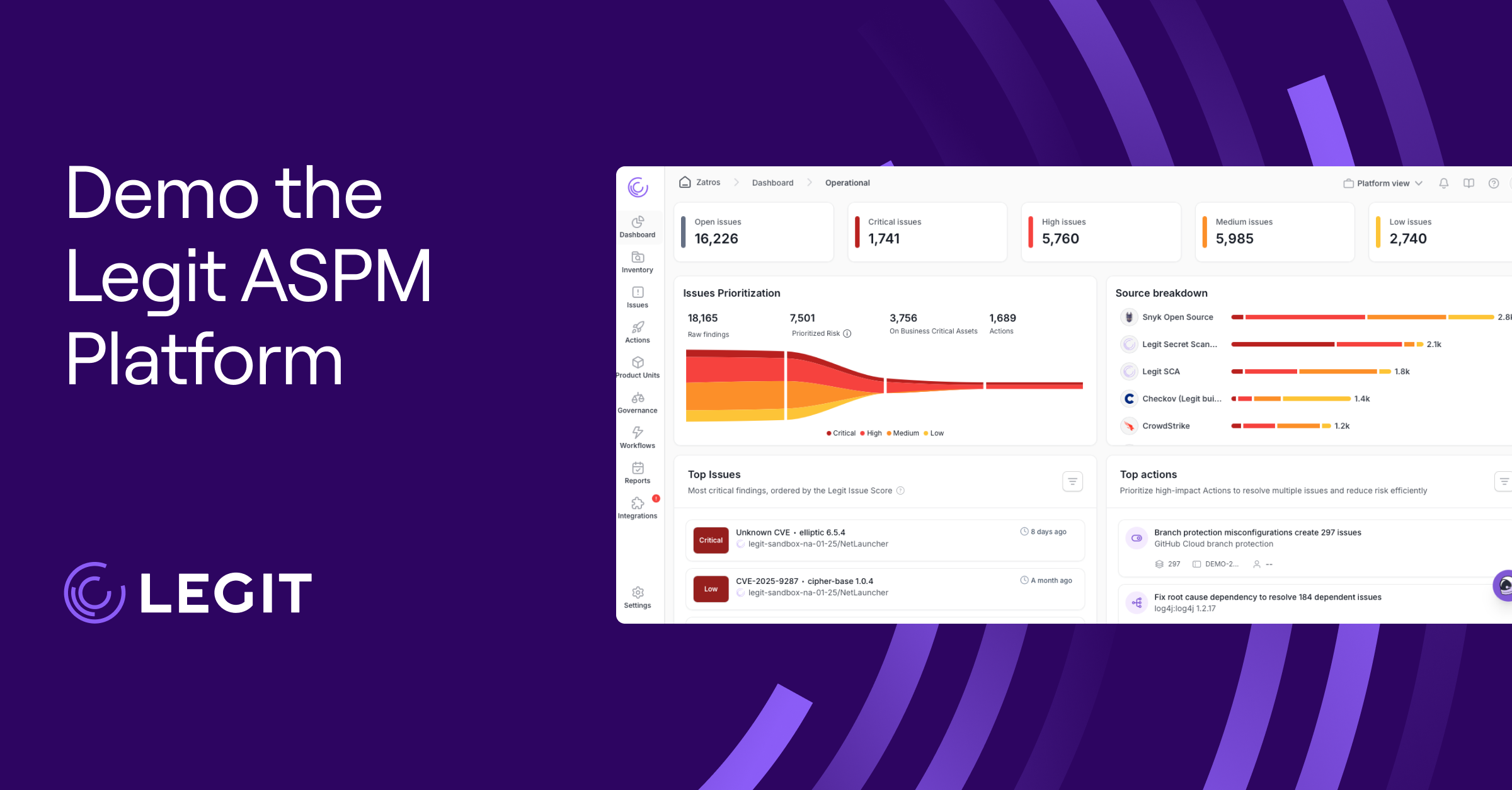Code reviews have evolved from a simple quality assurance check to playing a critical role in deploying secure applications. Reviews can improve code quality, readability, and maintainability. Most importantly, reviewers might catch bugs and errors that could introduce new ways for bad actors to infiltrate your system.
To see all the benefits, DevSecOps teams must follow best practices for code review. Doing so increases the likelihood of catching errors while improving team accountability and communication.
Keep reading to learn more about eight of the best practices and how your team can implement them into your workflow.
What Is a Code Review?
Code reviews are a structured practice where developers examine lines of code (LoC) before merging them with the codebase. Just like other methods of checking your work, the goal of a code review is to ensure compliance with coding standards and catch potential defects that could lead to bugs or bigger problems later on.
Ideally, every line of code added would be secure, but this isn’t always possible. Whether it’s a small pull request or a larger feature integration, code auditing and reviews can help developers spot and solve problems to maintain a secure codebase.
8 Best Practices for Code Review Processes
Despite the obvious benefits, code reviews can quickly become overwhelming and ineffective. IT managers and DevOps teams rely on review best practices to structure their process beyond knowing how to conduct code reviews.
Here are eight ways to build a comprehensive code review strategy.
1. Establish Clear Objectives
Code reviewers need to know what they’re evaluating and why before they begin. Organizations might formalize this into a checklist that reviewers can work through to ensure they cover all the necessary areas. At minimum, CISOs and other IT leaders should let reviewers know when specific areas are a bigger priority than others.
Here are some of the many checks that code reviewers make when examining code:
- Functionality: Does the code work as intended, even if it doesn’t generate any obvious errors?
- Readability: Could other developers easily understand and maintain the code even if they had never encountered it or the workflow before?
- Security: Does the code introduce risks that could be exploited? Does it close previously discovered security gaps?
- Performance: Will the code scale effectively under expected load conditions or when the business expands?
- Tests: Are there enough unit tests or automated checks to meet application security best practices?
2. Prioritize Security-Critical Code Areas
Even if the CTO and other IT leaders don’t explicitly name security as a top priority, developers must prioritize it when they write code for a pull request—and when they request a review of those proposed changes. Consider these areas during web app security and other software development security checks:
- Authentication mechanisms
- Authorization controls
- Data validation routines
- Cryptographic implementations
- API endpoints
3. Keep Reviews Below 400 Lines of Code
There are no formal rules on the size of pull requests or how many lines of code reviewers should cover. AI coding assistants can be useful, like making it easier for developers to review even more lines of code. However, the current industry standard is to stick to 200 to 400 LoC per reviewer.
When developers have to review over 400 lines of code, they’re likely to experience fatigue and miss errors. As the programming joke goes, “Ask a programmer to review 10 lines of code and they’ll find 10 issues. Ask them to do 500 lines and they’ll say it looks good.”
4. Implement Time-Boxed Code Review Sessions
The number of LoC is only one factor that contributes to review fatigue. Long review sessions can also create problems for human review. Experts who follow best practices for code review generally work for 60 to 90 minutes before taking a break. As with most technical tasks, extending intense focus beyond this time block correlates with lower attention spans—and a higher likelihood of missing errors.
5. Use Static Analysis Tools to Automate Security Detection
Static analysis tools help reviewers find common vulnerabilities, such as those outlined in the OWASP Top 10 and the CWE Top 25. These tools perform static code analysis to find things like injection flaws and insecure data handling patterns. They should never replace human oversight, but they can catch common problems and help reviewers spend more time solving bigger issues.
6. Enforce Constructive Feedback and Knowledge Sharing
Developers sometimes mistake peer reviews as an opportunity to be critical of their colleague’s work; others fear being criticized and become hesitant to share their code. Team leads should mentor developers on how to give constructive and actionable feedback. For example, comments should explain why certain practices might lead to security risks and suggest specific improvements for refactoring.
By fostering a collaborative environment, security and IT teams can take some of the anxiety out of the code review process while also encouraging reviewers to speak openly about issues.
7. Document Decisions and Learn From Them
Creating and maintaining a governing document of comments and suggestions for future reference can speed up the code review process—and help developers avoid making mistakes that have been flagged in previous reviews. These documents shouldn’t simply contain copied and pasted information. Instead, reviewers should summarize key findings or note common mistakes developers tend to make. To make everyone’s job a little easier, developers can reference this checklist before submitting their code for review, and reviewers can run through the checklist before merging approvals for the codebase.
8. Involve Junior Reviewers Early
Senior developers often seek out other seniors to review their code. Ideally, no code makes it to the codebase without another mid-level or senior developer reviewing the code. However, junior developers can learn a lot from reviewing code written by senior engineers.
By including developers who are earlier in their career, they’ll have the opportunity to interact with code that’s as close to best practices as possible, which they can learn from and model in their own work. After all, they’ll work on and support that code at some point, so earlier interaction can solidify their understanding and make later work easier. It demonstrates accountability and enforces standards for the work, both in terms of compliant code and submitting code reviews.
What Are the Steps of the Code Review Process?
Code reviews require collaboration at multiple levels within a DevOps team. Here’s how to perform a code review in five steps:
- Code submission: A developer must first write code and submit a pull request to prompt a review. This creates a formal checkpoint or phase gate that pauses further development or merging of that code before reviewers evaluate it.
- Automated tests: Human perspectives are critical for code security, but few organizations rely only on manual reviews. Many DevSecOps teams also use automated checks like unit tests and static code analysis tools to catch simple problems.
- Reviewer examination: Automated systems generally assign reviewers based on code ownership rules or team responsibilities. These reviewers then check the proposed code changes for functionality, security, and adherence to the organization’s coding standards and best practices.
- Feedback loops: Often, more than one developer provides feedback on the LoC during the code review process. Reviewers can request modifications or provide comments for further discussion, giving the original developer the opportunity to respond with updates or explanations.
- Approval and merge: The LoC will only be merged into the branch after the proposed changes meet all necessary safety and security requirements and get approval from reviewers. This final step ensures that only thoroughly reviewed and vetted code makes it to the codebase.
Enhance Code Review With Legit Security
Even when following coding review guidelines, the review process can quickly become cumbersome without the right tools. This is true whether you automate parts of the process or take a fully manual approach. Legit Security can help DevOps teams lighten the load by providing visibility into code contributions and surfacing only the most relevant and high-risk changes for reviewers to focus on.
Legit’s AI discovery tools also help developers stay accountable by catching and remediating risky AI code, so teams can plan where to focus human oversight to ensure nothing gets missed.
Ready to see how Legit Security can help you secure your software at every stage of the development process? Book a demo today.
Download our new whitepaper.


